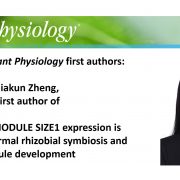
Structural analysis of HTL and D14 proteins reveals the basis for ligand selectivity in Striga (Nature Comm.)
Plant Science Research WeeklyStrigolactones induce germination of parasitic plant Striga, which causes more crop loss in Africa than any other parasite. Karrakins are structurally related to strigolactones, yet they do not induce Striga germination. By studying the structure and substrate recognition of strigolactone and karrakin-binding…
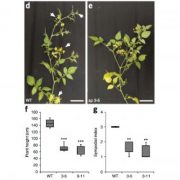
De novo domestication of wild tomato using genome editing (Nature Biotech - $)
Plant Science Research WeeklyBreeding of crops typically focuses on yield increase, and is accompanied with the loss the genetic diversity, reduced nutritional value as well as susceptibility to environmental stress. As many domestication traits exhibit simple Mendelian inheritance patterns, Zsögön et al. targeted known domestication…

What We're Reading: October 5
WWR Full PostGuest editor: Magdalena Julkowska
Magdalena is a PostDoc at King Abdullah University for Science and Technology (KAUST, Saudi Arabia) working with Prof. Mark Tester. Her main interests are (1) salt-induced changes in root-to-shoot ratio in Arabidopsis, (2) study the expression patterns in plants…
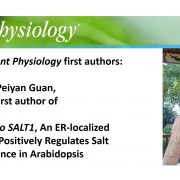
Recognizing Plant Physiology first authors: Peiyan Guan
Plant Physiology, Plant Physiology: Author ProfilesPeiyan Guan, first author of SENSITIVE to SALT1, An ER-localized Chaperone, Positively Regulates Salt Resistance in Arabidopsis
Current Position: Lecturer, Biology Department, Dezhou College, Dezhou, China
Education: PhD in Shandong Agricultural University, Tai’an, China
Non-scientific Interests:…
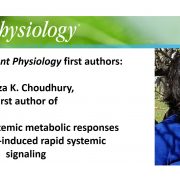
Recognizing Plant Physiology first authors: Feroza K Choudhury
Plant Physiology, Plant Physiology: Author ProfilesFeroza K. Choudhury, first author of Local and systemic metabolic responses during light-induced rapid systemic signaling
Current position: Postdoctoral fellow at Washington University in St. Louis, Missouri, USA
Education: PhD in Biochemistry and Molecular Biology, University of North Texas, Texas,…
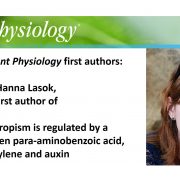
Recognizing Plant Physiology first authors: Hanna Lasok
Plant Physiology, Plant Physiology: Author ProfilesHanna Lasok, first author of Root gravitropism is regulated by a crosstalk between para-aminobenzoic acid, ethylene, and auxin
Current Position: Unemployed, looking for a job
Education: PhD (2018) in the Molecular Plant Physiology, University of Freiburg, Germany. M.S. (2010) in the Plant Biotechnology,…
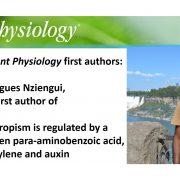
Recognizing Plant Physiology first authors: Hugues Nziengui
Plant Physiology, Plant Physiology: Author ProfilesHugues Nziengui, first author of Root gravitropism is regulated by a crosstalk between para-aminobenzoic acid, ethylene and auxin
Current Position: Independent professional, Saskatoon, SK, Canada
Education: PhD in Plant Breeding and Genetics, National Polytechnic Institute of Lorraine, Nancy, France
Non-scientific…
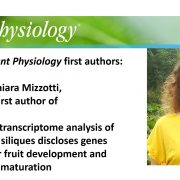
Recognizing Plant Physiology first authors: Chiara Mizzotti
Plant Physiology, Plant Physiology: Author ProfilesChiara Mizzotti, first author of Time-course transcriptome analysis of Arabidopsis siliques discloses genes essential for fruit development and maturation
Current Position: Postdoctoral fellow, Department of Biosciences, Università degli Studi di Milano
Education: PhD in Plant Biology (2012),…

Recognzing Plant Physiology first authors: Jiakun Zheng
Plant Physiology, Plant Physiology: Author ProfilesJiakun Zheng, first author of INCREASING NODULE SIZE1 expression is required for normal rhizobial symbiosis and nodule development
Current Position: Master candidate student, Root Biology Center, Fujian Agriculture and Forestry University, Fuzhou, China
Education: Bachelor in College of Agriculture,…

